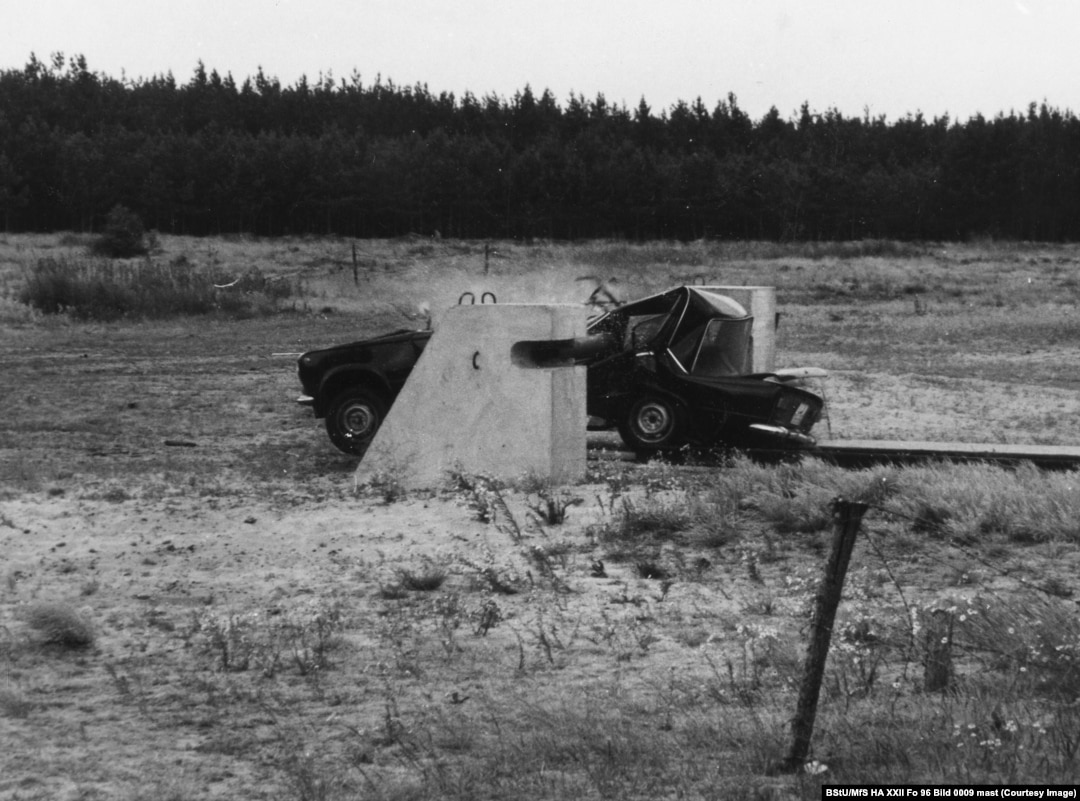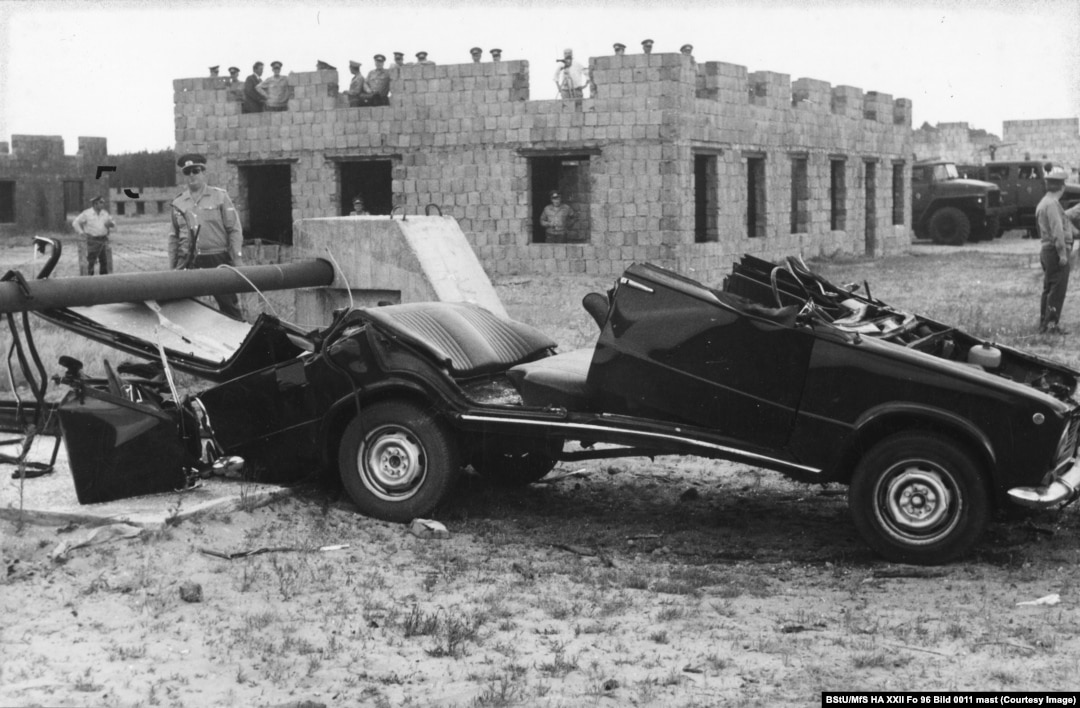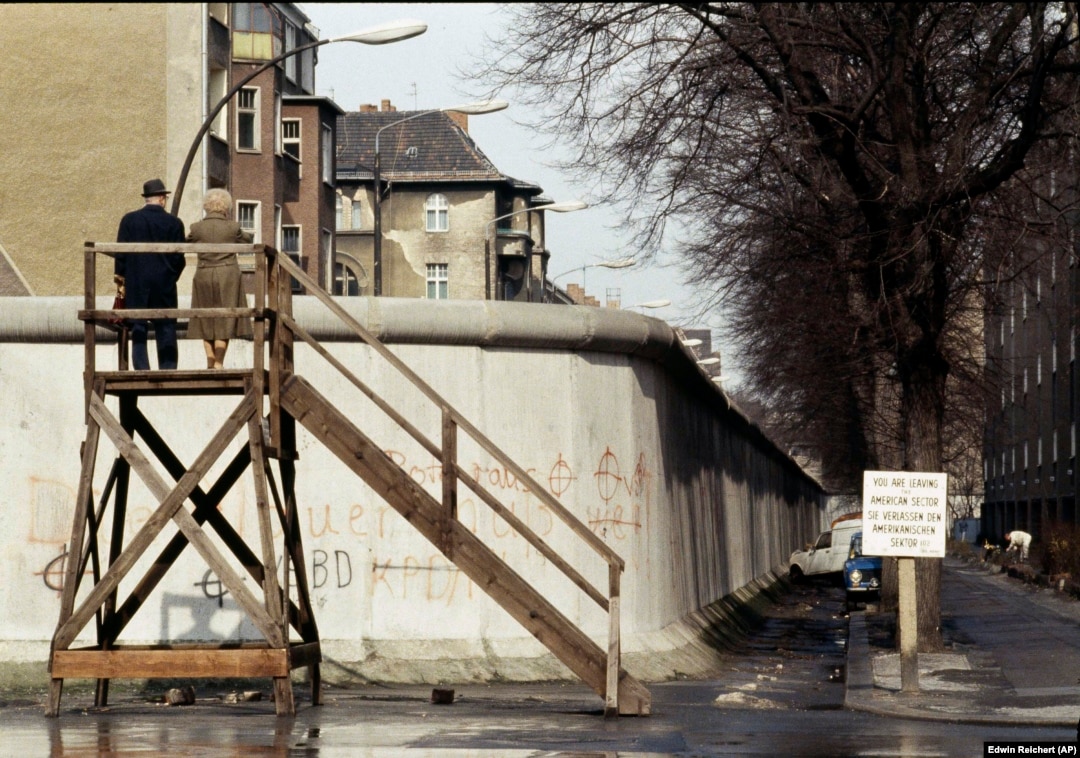The Secret Site Where East Germany's Stasi Perfected The Berlin Wall

A vehicle smashes into a steel barrier at a secret testing location in East Germany where obstacles to prevent people speeding to freedom through East Berlin's checkpoints were tested.
This 1980 photo is one of several held in Germany's Stasi Records Archive that reveal the lengths to which East Germany's authorities went to ensure anyone trying to escape the communist state would be stopped, or killed in the process.

The aftermath of a barrier test at the secret East German facility
Dr. Gerhard Salter, the head of research at The Berlin Wall Foundation, told RFE/RL these photos were taken at a site in Soviet-backed East Germany that remains secret to this day. "We have files from the Federal Archives that mention [the testing sites], but we know nothing more about them," he said.

A couple look over the wall into East Berlin in April 1983.
Salter says the testing of anti-vehicle barriers was only one part of a vast research-and-development effort to trap people inside the police state. The Berlin Wall design itself, he says, was trialled "for its resistance to attacks with vehicles, explosives, and how it would withstand natural events such as being washed away by water during heavy rainfall."
A truck is driven into a barrier at the secret research facility.
Harald Jager, a former Stasi lieutenant colonel, told German journalists in 2010: "Each time the border was penetrated [by a fugitive] it was followed up by an analysis. That's why the Ministry for State Security formed working groups to design technologically improved facilities, which were then tested."
This grid of sharpened rebar was one of countless such grates placed alongside the Berlin Wall from the mid-1960s, designed to pierce the shoes of fleeing East Germans. This section of "Stalin's Lawn" has been preserved in a museum of the The Berlin Wall Foundation.
Efforts to stop people fleeing from "actually existing socialism," was a constant battle for the East German authorities as their citizens devised new ways to flee to freedom.
This truck was rammed through a section of the Berlin Wall in February 1989. Three East Germans inside leapt out, wearing wetsuits, and jumped into the Spree River. Two successfully swam to West Berlin while the third was caught by an East German patrol boat and imprisoned.
A car is driven towards a row of spikes as another tire-piercing plate awaits its trial at the Stasi's secret test facility in 1980.
An image from the Stasi archives apparently showing a failed attempt to ram through a border crossing from East Germany in 1982.
Thousands of people were able to escape from East Berlin to freedom, but at least 140 were killed in their attempts during the decades the wall stood from 1961 until 1989.
Relatives of Chris Geoffroy, including his mother, Karin (front right), attend his funeral in East Berlin.
Geoffrey was the last person to be shot dead while trying to flee East Berlin after making a dash for the wall in February 1989. The Berlin wall came down, effectively ending the reign of the East German communist regime, on November 9, 1989.

